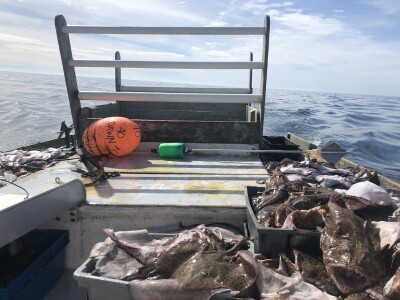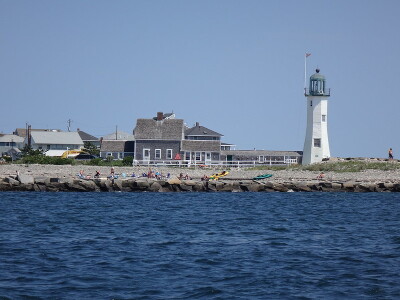According to my Merriam Webster dictionary, the word "truncated" is an adjective meaning cut short or curtailed. It was used fairly frequently during this morning's overview of the 2014 update of the Gulf of Maine cod stock assessment.
An overview of the 2014 update of the Gulf of Maine cod stock assessment began day one of a two-day peer review of the assessment. NMFS photoThe presentation by Michael Palmer of the Northeast Fisheries Science Center in Woods Hole, Mass., kicked-off a two-day meeting being held in Portsmouth, N.H. The meeting's purpose it to determine whether the science center's updated stock assessment, which reflects stock condition through 2013, meets the set of specific tasks it was directed to address.
The science center completed the stock assessment update earlier this year as part of its effort to address council and industry requests for more timely information on stock condition and for advance notice when early indications of stock condition changes are seen. The science center has been working on ways to streamline the assessment update process.
The goal is to develop a process that can alert managers to changes observed in survey, catch or other data collected between full assessments. Gulf of Maine cod was chosen was chosen as a test case for this approach because a benchmark assessment was completed in 2013.
According to update data, Gulf of Maine cod numbers are still declining. Commercial catches have declined since 2011, as have discards. Truncation in the size/age structure is seen in commercial and recreational fleets. Occurrence of large fish is declining in the commercial fishery and is now absent from the recreational fishery.
And despite catch reductions, survey indices for science center, Massachusetts and New Hampshire surveys have declined to the lowest levels in the survey time series. The spawning stock biomass is estimated to be below 2,500 metric tons under two model scenarios.
Truncation in cod size and age structures is evident in all surveys, the update says. Moreover, there's no signal of incoming recruitment. You can see all of the updated assessment data for yourself by clicking here.
Fishermen were able to ask questions and offer their input on the morning presentation. They wonder why cod mortality is going up even though harvesters aren't coming close to catching their annual catch limit. How much of cod mortality, they ask, is because of factors like predation and climate change?
And like the cod population, they say, the groundfish fishery has been truncated, too.
"The directed cod fishermen are out of business," said Vito Giacalone of the Northeast Seafood Coalition. "They're no longer in the game." Where once day boats accounted for 70 percent of the landings, they now account for 5 percent, he said.
The peer review meeting continues tomorrow at the Sheraton Harborside Hotel, 250 Market St., Portsmouth, N.H. If you're unable to attend the meeting, you can call (872) 240-3201 (the access code is 535-601-814) to listen to the proceedings and you can see graphics accompanying meeting discussions via a fee live webinar being broadcast.







